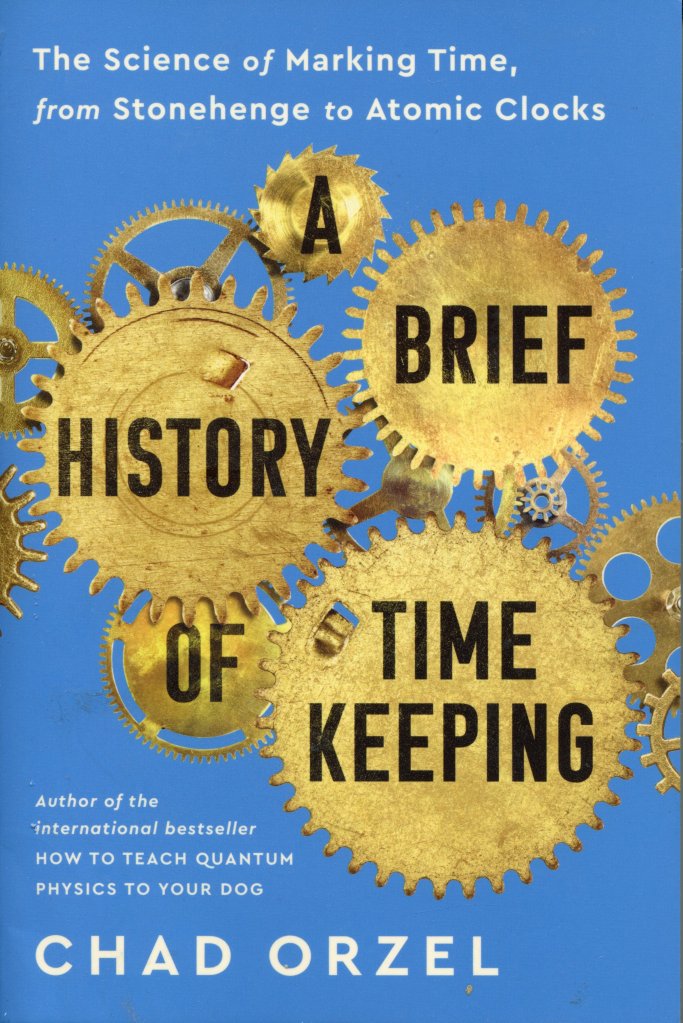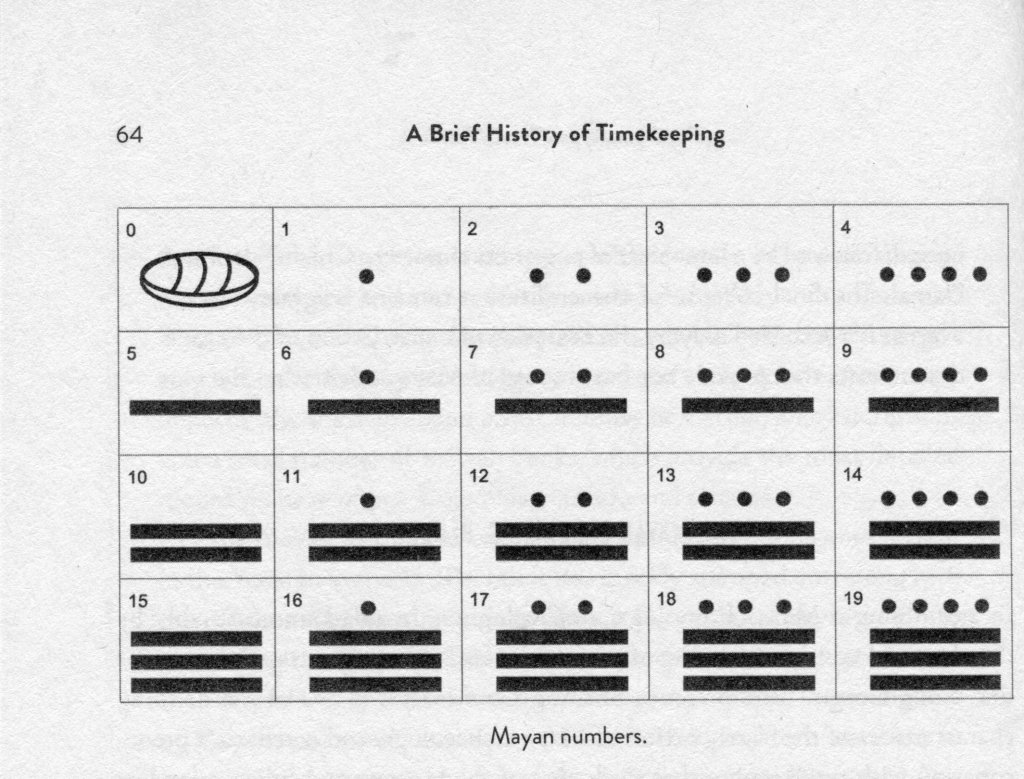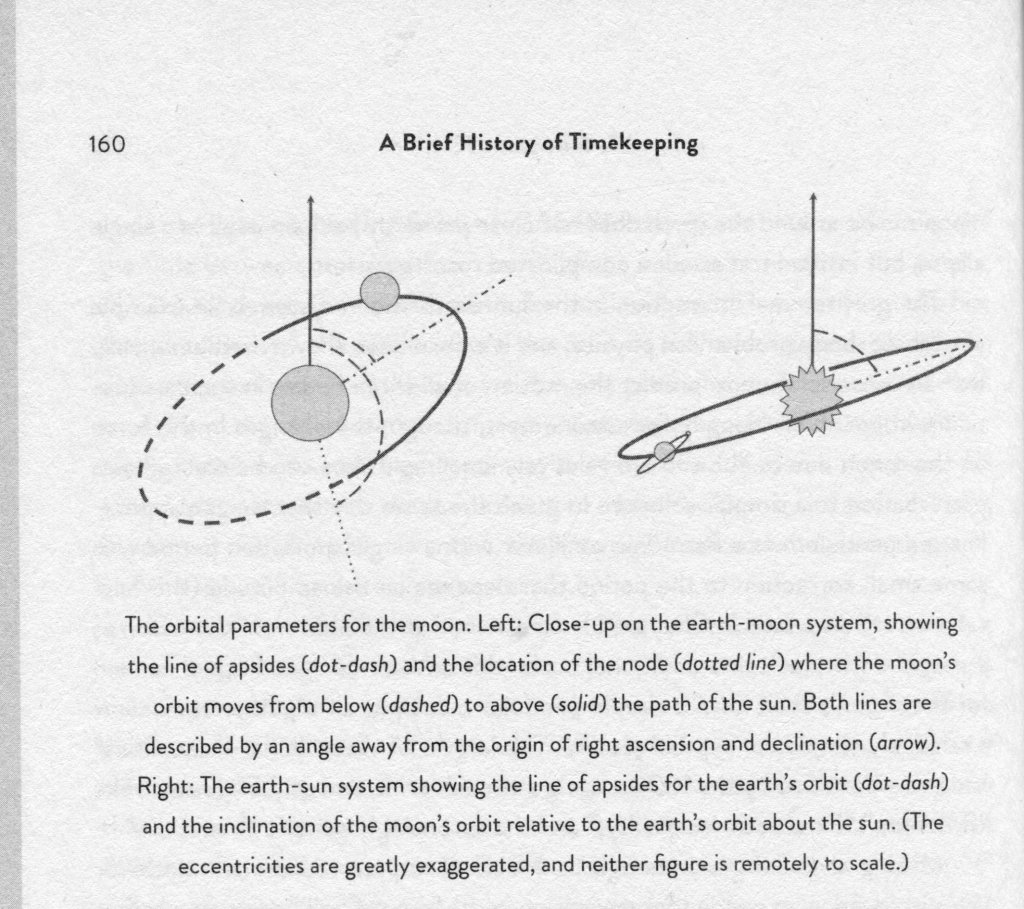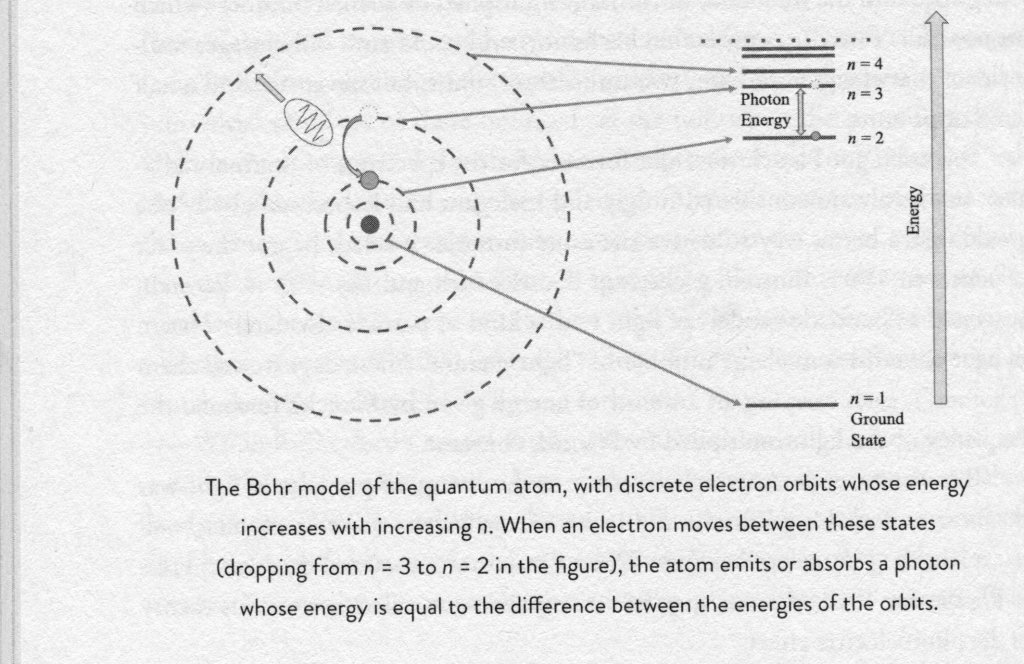As I have mentioned a few times in the past, I came late to the computer and the Internet. No Sinclairs, Ataris, or Commadores in my life, my first computer was a Bondi Blue iMac G3. All of which is kind of ironic, because by the time I acquired that G3, I was something of an expert on the history of computing and computing devices. Having acquired my G3, I then took baby steps into the deep waters of the Internet. My initial interest was in music websites starting with the Grateful Dead. Did I mention that I’m a Dead Head? One day I stumbled across Mark Chu-Carroll’s Good Math, Bad Math blog, which in turn introduced me to the Science Blogs collective of which it was a part. Here I discovered, amongst other, the Evolving Thoughts blog of John Wilkins. Who, more than any other, was responsible for me starting my own blog. Another blog that I started reading regularly was Uncertain Principles by the American physicist Chad Orzel, who wrote amusing dialogues explain modern physics to his dog Emmy. A publisher obviously thought they were good, they were, and they soon appeared as a book, How to Teach Physics to Your Dog (Scribner, 2010), launching his career as a writer of popular science books. This was followed by How to Teach Relativity to Your Dog (Basic Books, 2012) with the original book now retitled as How to Teach [Quantum] Physics to Your Dog. Leaving the canine world, he then published Eureka: Discovering Your Inner Scientist (Basic Books, 2014) followed by Breakfast With Einstein: The Exotic Physics of Everyday Objects (BenBella Books, 2018).
All of the above is a longwinded introduction to the fact that this is a review of Chad Orzel’s latest A Brief History of Timekeeping: The Science of Marking Time, from Stonehenge to Atomic Clocks[1].

Astute, regular readers might have noticed that I reviewed Davis Rooney’s excellent volume on the history of timekeeping About Time: A History of Civilisation in Twelve Clocks (Viking, 2021) back in September last year and they might ask themselves if and how the two books differ and whether having read the one it is worth reading the other? I follow both authors, and they follow each other, on Twitter and there were several exchanges during last year as to whether they were covering the same territory with their books. However, I can honestly report that if one is interested in the history of time keeping then one can read both books profitably, as they compliment rather than copy each other. Whereas Rooney concentrates on the social, cultural, and political aspects of measuring time, Orzel concentrates on the physics of how time was measured.
The title of this blog post is the title of the introductory chapter of Orzel’s book. This definition I viewed with maximum scepsis until I read his explication of it:
At the most basic level a clock is a thing that ticks.
The “tick” here can be the audible physical tick we associate with a mechanical clock like the one in Union’s Memorial Chapel, caused by collision between gear teeth as a heavy pendulum swings back and forth. It can also be a more subtle physical effect, like the alternating voltage that provides the time signal for the electronic wall clock in our classrooms. It can be exceedingly fast, like the nine-billion-times-a-second oscillations of the microwaves used in the atomic clock that provides the time signals transmitted to smartphones via the internet, or ponderously slow like the changing position of the rising sun on the horizon.
In every one of these clocks, though, there is a tick: a regular repeated action that can be counted to mark the passage of time.
I said above that what distinguishes Orzel’s book is a strong emphasis on the physics of timekeeping. To this end, the book had not one, but two interrelated but separate narratives. There is the main historical narrative in language accessible to every non-expert reader describing forms of timekeeping, their origins, and developments. The second separate narrative, presented on pages with a grey stripe on the edge, takes the willing reader through the physics and technical aspects behind the timekeeping devices described in the historical narrative. Orzel is a good teacher with an easy pedagogical style, so those prepared to invest a little effort can learn much from his explanations. This means that the reader has multiple possibilities to approach the book. They can read it straight through taking in historical narrative and physics explication as they come, which is what I did. They can also skip the physics and just read the historical narrative and still win much from Orzel’s book. It would be possible to do the reverse and just read the physics, skipping the historical narrative, but I, at least, find it difficult to imagine someone doing this. Other possibilities suggest themselves, such as reading first the historical narrative, then going back and dipping into selected explanations of some of the physics. I find the division of the contents in this way a very positive aspect of the book.
Orzel starts his journey through time and its measurement with the tick of the sun’s annual journey. He takes us back to the Neolithic and such monuments as the Newgrange chamber tomb and Stonehenge which display obvious solar orientations. The technical section of this first chapter is a very handy guide to all things to do with the solar orbit. The second chapter stays with astronomy and the creation of early lunar, lunar-solar and solar calendars. Here and in the following chapter which deals with the Gregorian calendar reform there are no technical sections.
In Chapter 4, The Apocalypse That Wasn’t, Orzel reminds us of all the rubbish that was generated in the months leading up to the apocalypse supposedly predicted by the Mayan calendar in 2012. In fact, all it was the end of one of the various Mayan cycles of counting days. Orzel gives a very good description of the Mayan number system and their various day counting cycles. An excellent short introduction to the topic for any teacher.

Leaving Middle America behind, in the next chapter we return to the Middle East and the invention of the water clock or clepsydra. He takes us from ancient Egypt and the simplest form of water clock to the giant tower clock of medieval China. The technical section deals with the physics of the various systems that were developed to produce a constant flow in a water clock. In the simplest form of water clock, a hole in the bottom of a cylinder of water, the rate of flow slows down as the mass of water in the cylinder decreases.
Chapter 6 takes us to the real tick tock of the mechanical clock from its beginnings up to the pendulum clock. Interestingly there is a lot of, well explained, physics in the narrative section, but the technical section is historical. Orzel gives us a careful analysis of what exactly Galileo did or did not do, did or did not achieve with his pendulum experiments. The chapter closes with the story how the pendulum was used to help determine the shape of the earth.
The next three chapters take as deep into the world of astronomy. For obvious reasons astronomy and timekeeping have always been interwoven strands. We start with what is basically a comparison of Mayan astronomy, with the Dresden Codex observations of Venus, and European astronomy. In the European section, after a brief, but good, section on Ptolemy and his epicycle- deferent model, we get introduced to the work of Tycho Brahe.
The rules of the history of astronomy says that Kepler must follow Tycho and that is also the case here. After Kepler’s laws of planetary motion, we arrive at the invention of the telescope, the discovery of the moons of Jupiter and the determination of the speed of light. If you want a good, accurate, short guide to the history of European astronomy then this book is for you.
Chapter nine starts with a very brief introduction to the world of Newtonian astronomy before taking the reader into the problem of determining longitude, a time difference problem, and the solution offered by the lunar distance method as perfected by Tobias Mayer. Here, the technical section explains why the determination of longitude is a time difference problem, how the lunar distance method works, and why it was so difficult to make it work.

Of course, in a book on the history of timekeeping, having introduced the longitude problem we now have John Harrison and the invention of the marine chronometer. I almost cheered when Orzel pointed out that although Harrison provided a solution, it wasn’t “the” solution because his chronometer was too complex and too expensive to be practical. The technical section is a brief survey of the evolution of portable clocks. The chapter closes with a couple of paragraphs in which Orzel muses over the difference between “geniuses” and master craftsmen, a category into which he places both Mayer and Harrison. I found these few lines very perceptive and definitely worth expanding upon.
Up till now we were still in the era of local time determined by the daily journey of the sun. Orzel’s next chapter takes us into the age of railways, and telegraphs and the need for standardised time for train timetables and the introduction of our international time zone system. The technical section is a fascinating essay on the problems of synchronising clocks using the telegraph and having to account for the delays caused by the time the signal needs to travel from A to B. It’s a hell of a lot more complex than you might think.
We are now firmly in the modern age and the advent of the special theory of relativity. Refreshingly, Orzel does most of the introductory work here by following the thoughts of Henri Poincaré, the largely forgotten man of relativity. Of course, we get Albert too. The technical section is about clocks on moving trains and will give the readers brains a good workout.
Having moved into the world of modern physics Orzel introduces his readers to the quantum clock and timekeeping on a mindboggling level of accuracy. We get a user-friendly introduction to the workings of the atomic clock. This was the first part of the book that was completely new to me, and I found it totally fascinating. The technical section explains how the advent of the atomic clock has been used to provide a universal time for the world. The chapter closes with a brief introduction to GPS, which is dependent on atomic clocks.

Einstein returns with his general theory of relativity and a technical section on why and how exactly gravity bends light. A phenomenon that famously provided the first confirmation of the general theory.
Approaching the end, our narrative takes a sharp turn away from the world of twentieth century physics to the advent and evolution of cheap wrist and pocket watches. In an age where it is taken for granted that almost everyone can afford to carry an accurate timekeeper around with them, it is easy to forget just how recent this phenomenon is. The main part of this chapter deals with the quartz watch. A development that made a highly accurate timepiece available cheaply to everyone who desired it. Naturally, the technical section deals with the physics of the quartz clock.
The book closes with a look at The Future of Time. One might be forgiven for thinking that modern atomic clocks were the non plus ultra in timekeeping, but physicists don’t share this opinion. In this chapter Orzel describes various project to produce even more accurate timepieces.
Throughout the book are scattered footnote, which are comments on or addition to the text. The book is illustrated with grey scale drawing and diagrams that help to explicate points being explained. There is a short list of just seven recommended books for further reading. I personally own six of the seven and have read the seventh and can confirm that they are all excellent. There is also a comprehensive index.
Chad Orzel is a master storyteller and despite the, at times, highly complex nature of the narrative he is spinning, he makes it light and accessible for readers at all levels. He is also an excellent teacher and this book, which was originally a course that he teaches, would make a first-class course book for anybody wishing to teach a course on the history of timekeeping from any level from say around middle teens upwards. Perhaps combined with Davis Rooney’s About Time: A History of Civilisation in Twelve Clocks, as I find that the two books compliment each other perfectly. Orzel’s A Brief History of Timekeeping: The Science of Marking Time, from Stonehenge to Atomic Clocks is a first-rate addition to the literature on the topic and highly recommendable.
[1] Chad Orzel, A Brief History of Timekeeping: The Science of Marking Time, from Stonehenge to Atomic Clocks, BenBella Books, Dallas, TX, 2022